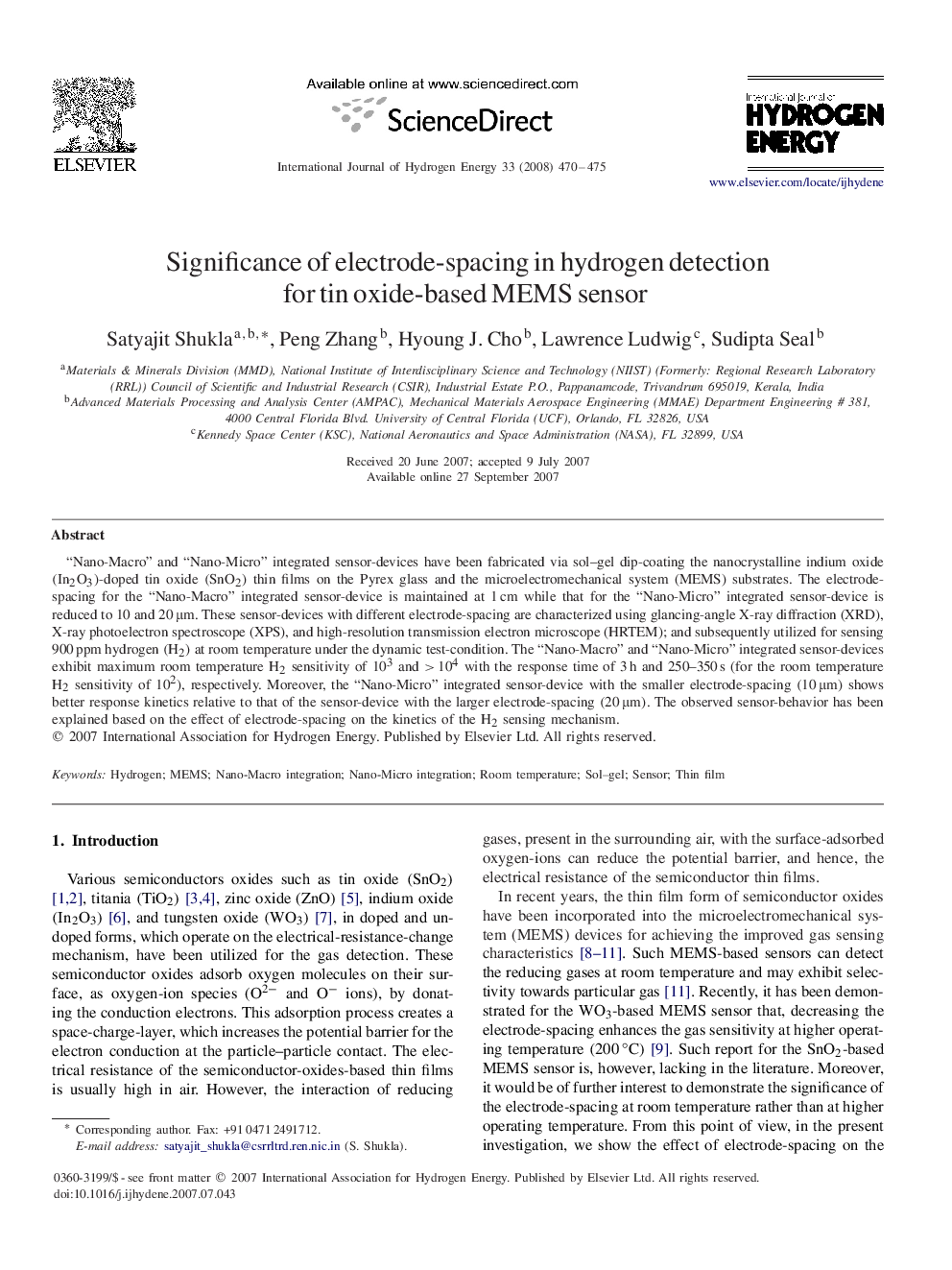| Article ID | Journal | Published Year | Pages | File Type |
|---|---|---|---|---|
| 1279493 | International Journal of Hydrogen Energy | 2008 | 6 Pages |
“Nano-Macro” and “Nano-Micro” integrated sensor-devices have been fabricated via sol–gel dip-coating the nanocrystalline indium oxide (In2O3)(In2O3)-doped tin oxide (SnO2)(SnO2) thin films on the Pyrex glass and the microelectromechanical system (MEMS) substrates. The electrode-spacing for the “Nano-Macro” integrated sensor-device is maintained at 1 cm while that for the “Nano-Micro” integrated sensor-device is reduced to 10 and 20μm. These sensor-devices with different electrode-spacing are characterized using glancing-angle X-ray diffraction (XRD), X-ray photoelectron spectroscope (XPS), and high-resolution transmission electron microscope (HRTEM); and subsequently utilized for sensing 900 ppm hydrogen (H2)(H2) at room temperature under the dynamic test-condition. The “Nano-Macro” and “Nano-Micro” integrated sensor-devices exhibit maximum room temperature H2H2 sensitivity of 103103 and >104>104 with the response time of 3 h and 250–350 s (for the room temperature H2H2 sensitivity of 102102), respectively. Moreover, the “Nano-Micro” integrated sensor-device with the smaller electrode-spacing (10μm) shows better response kinetics relative to that of the sensor-device with the larger electrode-spacing (20μm). The observed sensor-behavior has been explained based on the effect of electrode-spacing on the kinetics of the H2H2 sensing mechanism.
